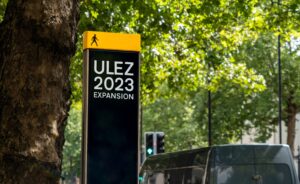At the risk of stating the obvious, UK scientists have proven better ventilation is the most effective way to make the capital’s iconic Tube network less harmful to lungs.
Researchers at the University of Surrey’s Global Centre for Clear Air Research (GCARE) wanted to ascertain the main factors that make London Underground stations a hotbed for particulate matter. Taking to a deep-level platform at South Kensington, 18metres below ground, they began collecting airborne particles, quickly deducing that levels far exceeded the official World Health Organisation (WHO) guidance for both fine and coarse particulates.
Pollution collected was then analysed using an electron microscope, at which point ultrafine particles were also discovered. These included iron, chromium, manganese, and toxic organic matter. Over there course of a working day at the platform, 5AM to midnight, it was found that operating hours for services led to. leap in coarse air pollution particles, which doubled, while 81% of smaller sized parties were capable of finding a way deep into human respiratory systems, a major cause for concern among health professionals.
“Our research provides interesting preliminary evidence about the levels of pollution within one underground station. This is the first time the chemistry of the smallest particles, which can go deep into the lung and potentially damage cells, has been identified. Future research will help determine the potential health effects of such exposure,’ said Professor Alex Porter of Imperial, who led on examination of the particles collected under the electron microscope.
‘More work needs to be done to understand how the metal traces in the small airborne particles impact people’s health. In the meantime, we recommend that consideration is given to improving ventilation on the London Underground where possible,’ added Professor Prashant Kumar, study lead and Director of GCARE. ‘We accept that air pollution on platforms is a very complex problem to solve and that an effort is being made to clean the Underground during quieter periods. Our team points to the newly opened Elizabeth Line as an example of good practice — in particular, the use of a screen between the train and the platform to protect passengers from pollution caused by the trains.’
Image: Mediocre Studio


















Leave a Reply